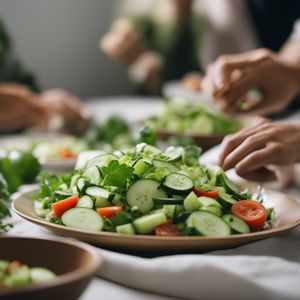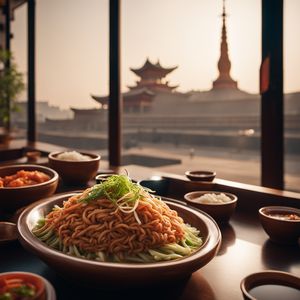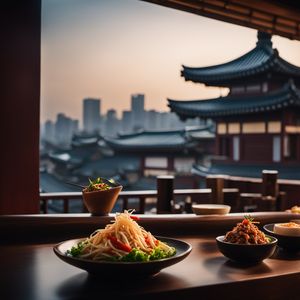
Dish
Saengchae
Saengchae Salad
Saengchae is made by julienning cucumbers, carrots, and Korean pear, then mixing them with sliced scallions and a spicy dressing made with gochujang, vinegar, and sugar. The salad is garnished with sesame seeds and served cold. Saengchae is a popular side dish in Korea and is often served with grilled meats or rice.
Origins and history
Saengchae is a traditional Korean dish that has been enjoyed for centuries. It is believed to have originated in the royal court of the Joseon dynasty, where it was served as a palate cleanser between courses. Today, it is a popular side dish that is enjoyed by people of all ages.
Dietary considerations
Saengchae is suitable for vegetarians and vegans. It is also gluten-free and dairy-free.
Variations
There are many variations of Saengchae, some of which include different vegetables such as radish or lettuce. Some recipes also call for the addition of seafood such as shrimp or squid. Vegetarian versions of the salad can be made by omitting the seafood.
Presentation and garnishing
Saengchae is typically served in a small bowl or plate. It is garnished with sesame seeds and sliced scallions. The salad should be served cold.
Tips & Tricks
To make Saengchae even more flavorful, try marinating the vegetables in the dressing for a few hours before assembling the salad. This will allow the flavors to meld together and create a more complex taste.
Side-dishes
Saengchae is often served as a side dish with grilled meats such as bulgogi or galbi. It also pairs well with rice and other Korean side dishes such as kimchi or japchae.
Drink pairings
Saengchae pairs well with light beers or white wines such as Riesling or Sauvignon Blanc. It can also be served with a cold glass of Korean rice wine, or makgeolli.
Delicious Saengchae recipes
More dishes from this category... Browse all »

Achicuk Salad
Turkish cuisine

Acquasala
Italian cuisine

Agurksalat
Norwegian cuisine

Ajotomate
Mexican cuisine

Amanida catalana
Spanish cuisine

Amish Pasta Salad
American cuisine

Asadillo manchego
Spanish cuisine

Askordoulakous
Greek cuisine


